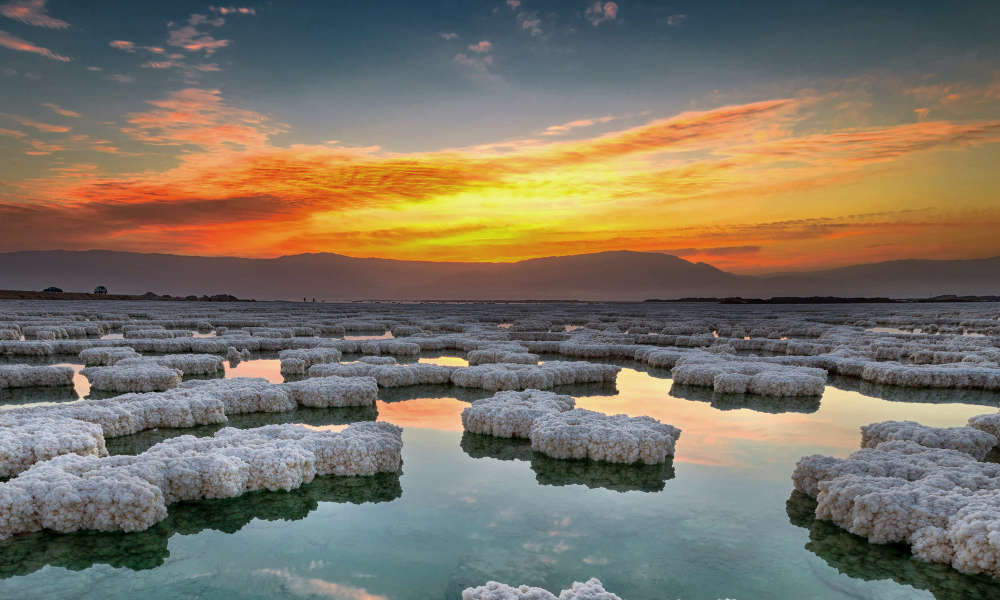In 1994 I was working as a Christian counselor for a halfway house which brought 40 Cubans out every 3 months from prison. I had months earlier checked out a book from the library about the Dead Sea scrolls and after reading it my interest peaked. And I wanted to learn everything there was to know about them. Since I work the third shift from 12 to 8 a.m. I had the days off and was able to visit local seminaries and find any articles that were published by scholars on the Dead Sea scrolls. I spent three years copying every article that has been written and studied them I became not only familiar with the scrolls themselves but with the scholars and people who were presenting them from the day they were discovered in 1947, until they were stored in the Shrine of the Book in Israel. As far as the articles went most were excellent and well presented, occasionally you came across one that was preposterous, deviating from any given norm. A history of the scholars could be and has been subject of many books. There were 7 scrolls found in cave 1.
The original seven scrolls from Cave 1 at Qumran are the Great Isaiah Scroll (1QIsaa), a second copy of Isaiah (1QIsab), the Community Rule Scroll (1QS), the Pesher Habakkuk (1QpHab), the War Scroll (1QM), the Thanksgiving Hymns (1QH), and the Genesis Apocrypha (1QapGen).
Unlike the other caves this was one was not intended to be found or the materials in it There was no entrance except an opening in the top ,and the scrolls were stored in clay jars and sealed. as a time capsule for 2,000 years. Many scholars believe these to be the works of the so-called essences but in fact are the work of John the Baptist and his coworkers. The essences we’re located further south near Ein-Gedi above the Dead Sea.
As a Christian, one of the most important books to me is the New Testament. It is a foundation of the faith. Romans 10:17, So faith comes from hearing, and hearing by the word of God. It gives me great comfort that the NewTestament is validated by the verification of more manuscripts than any other ancient work. There are over 5,800 complete or fragmented Greek manuscripts, 10,000 Latin manuscripts and 9,300 manuscripts in various other ancient languages, such as Syriac, Slavic, Gothic, Ethiopic, Coptic and Armenian. The oldest surviving New Testament manuscript is very small, with about 3 verses of the Gospel of John on either side, dating to about AD 125. The most attested part of the New Testament in the surviving manuscripts is the Gospels,followed by Paul’s letters.
Codex Sinaiticus is one of the most important books in the world. Handwritten well over 1,600 years ago, the manuscript contains the Christian Bible in Greek, including the oldest complete copy of the New Testament. Its heavily corrected text is of outstanding importance for the history of the Bible and the manuscript—the oldest substantial book to survive Antiquity—is of supreme importance for the history of the book. The codex itself is much more than the New Testament—it contains a large portion of the Septuagint, including apocryphal texts, and transcriptions of two books of the Apostolic Fathers.
The Bible we use today originates from really early historical documents. Scholars are able to assess the importance of a manuscript by how much of the Bible it includes, and by the date assigned to it.
What factors help to determine the age of a manuscript? Lots of factors, including the material used, the letter size and form, text divisions, ornamentation, the color of the ink, and even Carbon-14 dating.
Historians subject the gospels to critical analysis, attempting to differentiate, rather than authenticate, reliable information from possible inventions, exaggerations, and alterations.[1] Since there are more than 15,000 New Testament manuscripts which present hundreds of thousands of textual variants,[23] scholars use textual criticism to determine which gospel variants could theoretically be taken as ‘original’. To answer this question, scholars have to ask who wrote the gospels, when they wrote them, what was their objective in writing them,[24] what sources the authors used, how reliable these sources were, and how far removed in time the sources were from the stories they narrate, or if they were altered later. Scholars can also look into the internal evidence of the documents, to see if, for example, the document is misquoting texts from the Hebrew Tanakh, is making claims about geography that were incorrect, if the author appears to be hiding information, or if the author has made up a certain prophecy.[25] Finally, scholars turn to external sources, including the testimony of early church leaders, writers outside the church (mainly Jewish and Greco-Roman historians) who would have been more likely to have criticized the early churches, and to archaeological evidence. (Wikipedia)
A Christian has these text confirmations in addition to their own inherent spiritual and faith based assessment to rely on.
But what if there were another document previously unknown to document the New Testament that is dated first century as first hand gospel writer were found?
That is exactly what I am introducing here in this book “The Diary of John the Baptist as found in the Dead Sea Scrolls”. It includes The Diary, and a Commentary which correlates exactly with the Gospel of John as we know it.
The radio-carbon dating is 47 BCE–118 CE ,Paleographically the scroll is considered to date from the 1st century B.C.E.
One can read the commentary and see for themselves the correlation with the Gospel of John.
The text of the Diary comes from the “Thanksgiving Hymns” also known as the “Hodayot”
